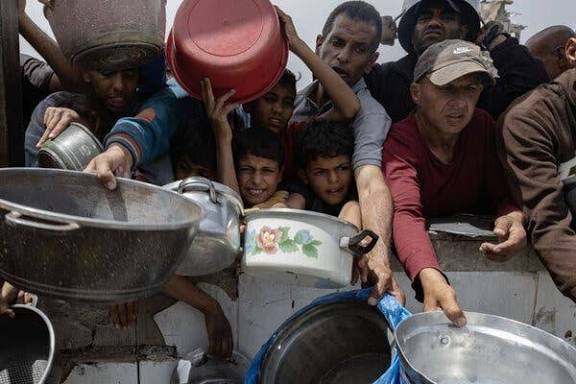The war in Gaza, now in its second year, has created a generation of children teetering on the edge of survival. The United Nations Children’s Fund (UNICEF) warned this week that more than 10,000 children in Gaza City alone require urgent treatment for acute malnutrition — a stark reminder that the conflict’s toll extends well beyond the battlefield.
“Mass displacement is pushing families into unimaginable conditions,” said Tess Ingram, a UNICEF spokeswoman based in southern Gaza’s Al-Mawasi zone. “For the most vulnerable, it is a deadly threat.”
Ingram spoke during a UN press briefing in Geneva, painting a grim picture of hunger spreading across the enclave. She said an estimated 26,000 children throughout Gaza now need immediate nutritional care. The crisis has grown particularly severe in Gaza City, where one in five children suffers from acute malnutrition — nearly double the rate recorded across the strip.
By August, UNICEF found that more than one in eight children in Gaza were malnourished, the highest figure ever documented in the territory. But as fighting intensified this week, the very clinics that once provided life-saving treatments have shuttered, closed by evacuation orders and military escalation.
Israel has urged families to move south to Al-Mawasi, pledging that food, medicine, and shelter await them there. Yet the promise offers little reassurance. For nearly two years, Israeli strikes have repeatedly hit areas designated as humanitarian zones, with the military insisting they were targeting Hamas fighters.
“It is inhumane to expect nearly half a million children, battered and traumatized by over 700 days of unrelenting conflict, to flee one hellscape only to end up in another,” Ingram said.
Read Also: Newcastle Apologise After Ticketing Oversight Scandal
The human tide of displacement continues. Since mid-August, roughly 150,000 people have fled Gaza City, according to UNICEF. But tens of thousands more remain trapped, moving anxiously between neighborhoods, unable to find a safe refuge.
The war’s origins trace back to the Hamas-led assault of October 2023, which left 1,219 people dead inside Israel, most of them civilians. Israel’s response has been relentless: more than 64,900 Palestinians, the majority civilians, have been killed, according to Gaza’s health ministry, whose figures the United Nations deems credible.
Independent reporting from Gaza is sharply constrained. Media restrictions and the dangers of accessing many parts of the enclave make it nearly impossible to verify claims from either side. Still, UNICEF’s data provides one of the few clear metrics of the humanitarian disaster unfolding in real time: starving children.










